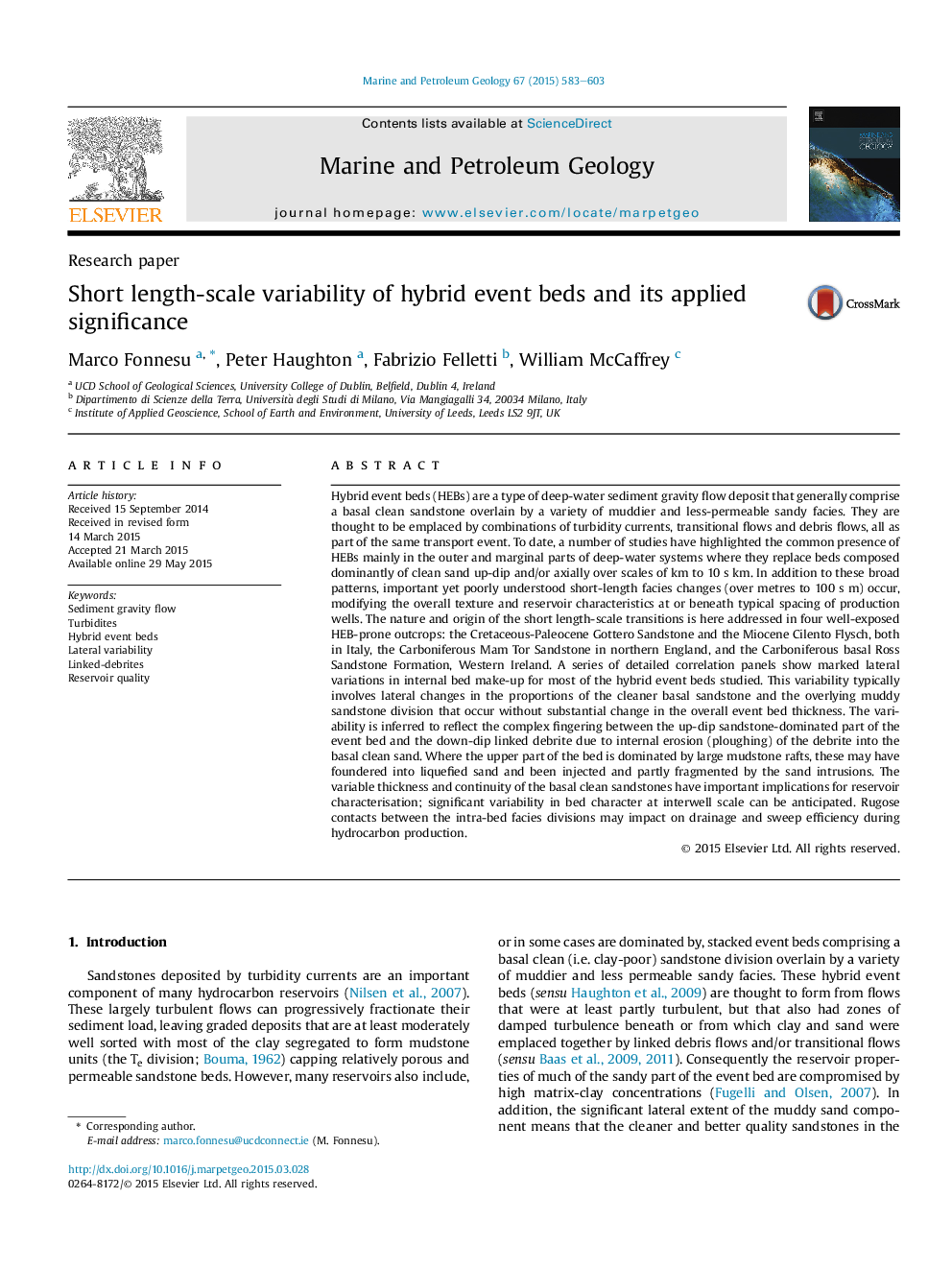| کد مقاله | کد نشریه | سال انتشار | مقاله انگلیسی | نسخه تمام متن |
|---|---|---|---|---|
| 6434962 | 1637159 | 2015 | 21 صفحه PDF | دانلود رایگان |
- Bed-scale data compiled for hybrid event beds in four turbidite systems.
- Short-scale (100 s m) facies changes identified in both strike and dip sections.
- Preservation of basal sand related to erosion/loading by linked debris flow.
- Characterisation of up-dip turbidite to down-dip debrite transformation zone.
- Rugose upper contact of basal sand important for reservoir character.
Hybrid event beds (HEBs) are a type of deep-water sediment gravity flow deposit that generally comprise a basal clean sandstone overlain by a variety of muddier and less-permeable sandy facies. They are thought to be emplaced by combinations of turbidity currents, transitional flows and debris flows, all as part of the same transport event. To date, a number of studies have highlighted the common presence of HEBs mainly in the outer and marginal parts of deep-water systems where they replace beds composed dominantly of clean sand up-dip and/or axially over scales of km to 10 s km. In addition to these broad patterns, important yet poorly understood short-length facies changes (over metres to 100 s m) occur, modifying the overall texture and reservoir characteristics at or beneath typical spacing of production wells. The nature and origin of the short length-scale transitions is here addressed in four well-exposed HEB-prone outcrops: the Cretaceous-Paleocene Gottero Sandstone and the Miocene Cilento Flysch, both in Italy, the Carboniferous Mam Tor Sandstone in northern England, and the Carboniferous basal Ross Sandstone Formation, Western Ireland. A series of detailed correlation panels show marked lateral variations in internal bed make-up for most of the hybrid event beds studied. This variability typically involves lateral changes in the proportions of the cleaner basal sandstone and the overlying muddy sandstone division that occur without substantial change in the overall event bed thickness. The variability is inferred to reflect the complex fingering between the up-dip sandstone-dominated part of the event bed and the down-dip linked debrite due to internal erosion (ploughing) of the debrite into the basal clean sand. Where the upper part of the bed is dominated by large mudstone rafts, these may have foundered into liquefied sand and been injected and partly fragmented by the sand intrusions. The variable thickness and continuity of the basal clean sandstones have important implications for reservoir characterisation; significant variability in bed character at interwell scale can be anticipated. Rugose contacts between the intra-bed facies divisions may impact on drainage and sweep efficiency during hydrocarbon production.
Journal: Marine and Petroleum Geology - Volume 67, November 2015, Pages 583-603
